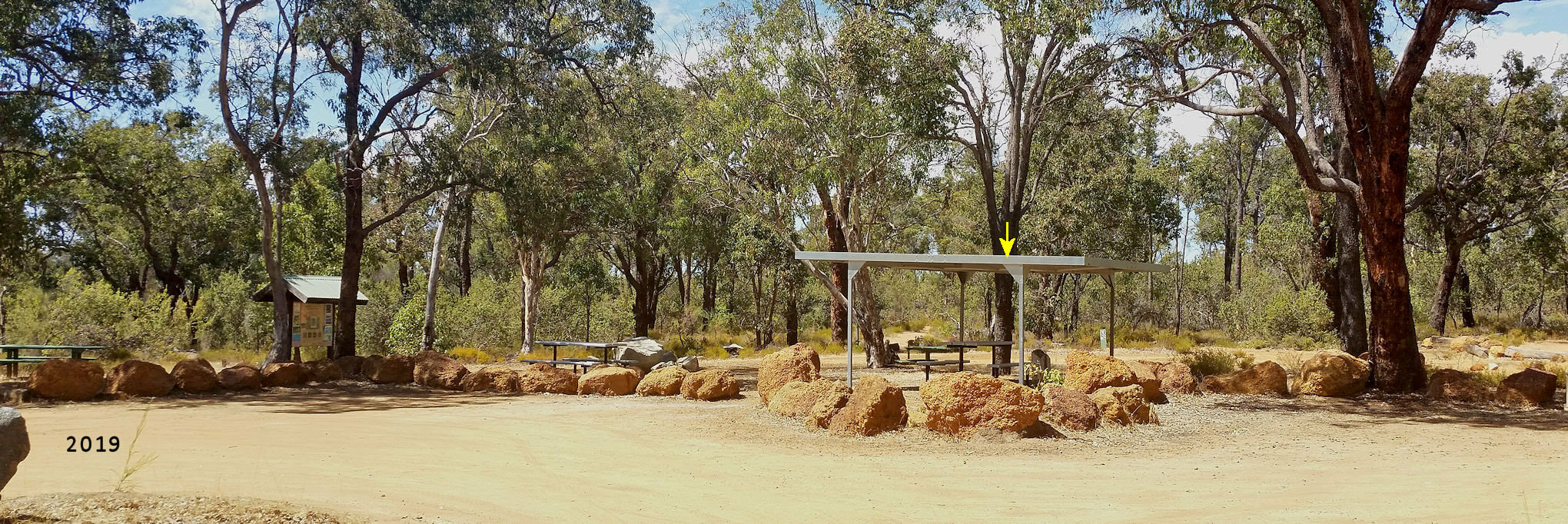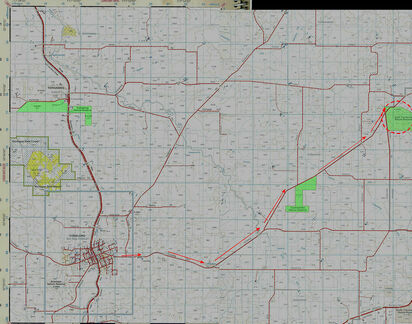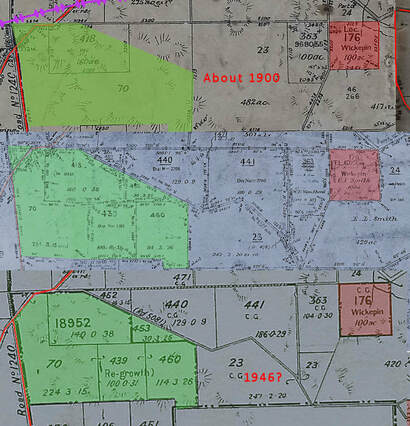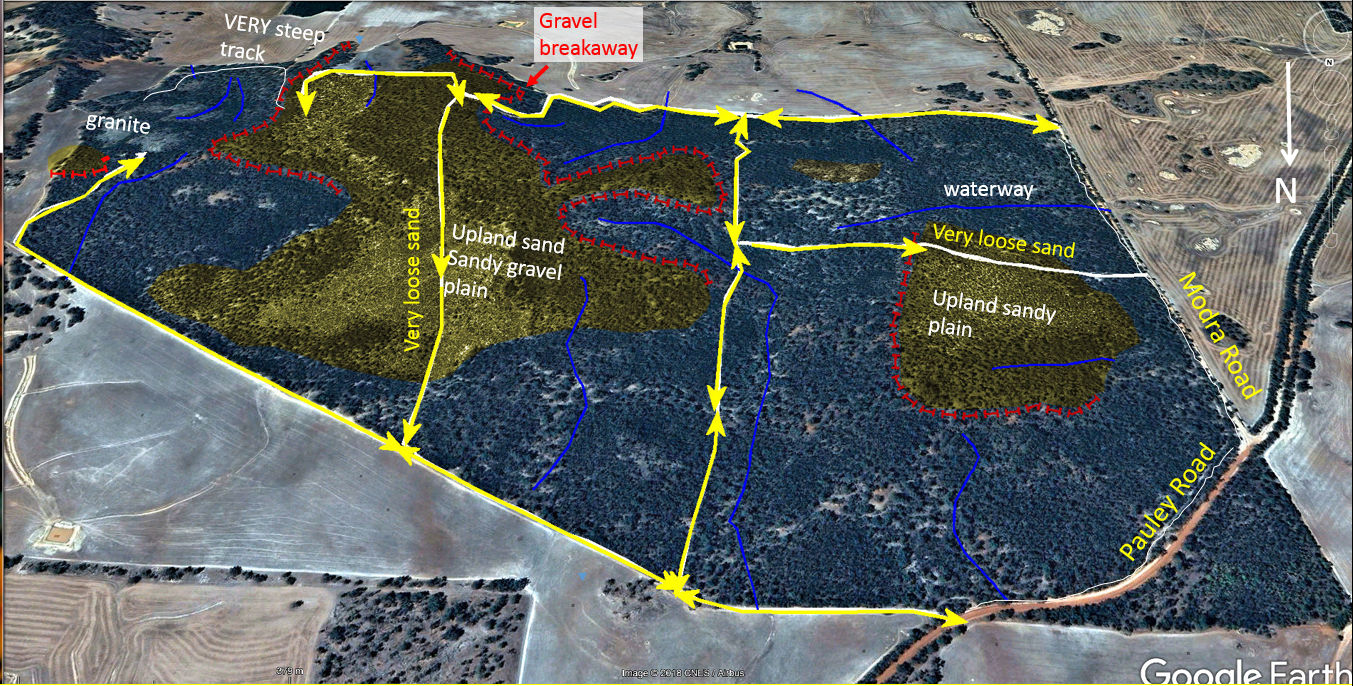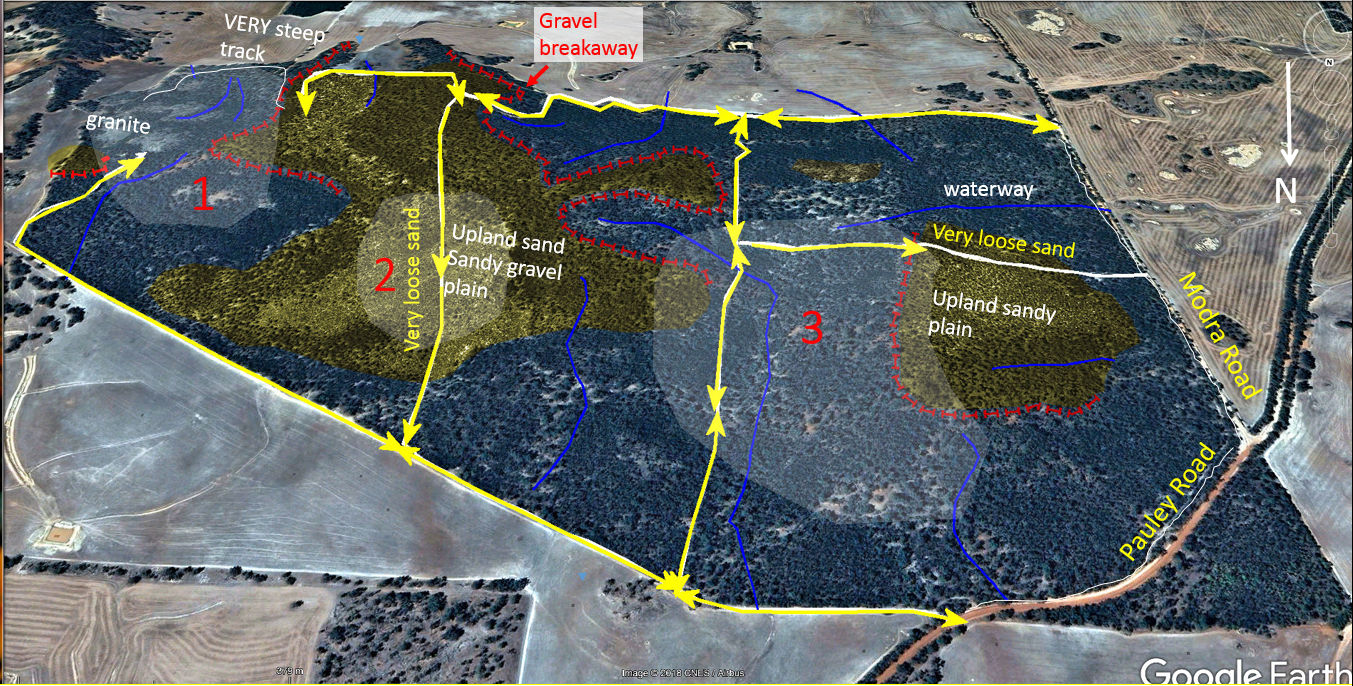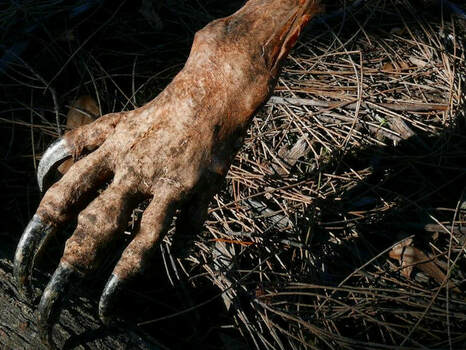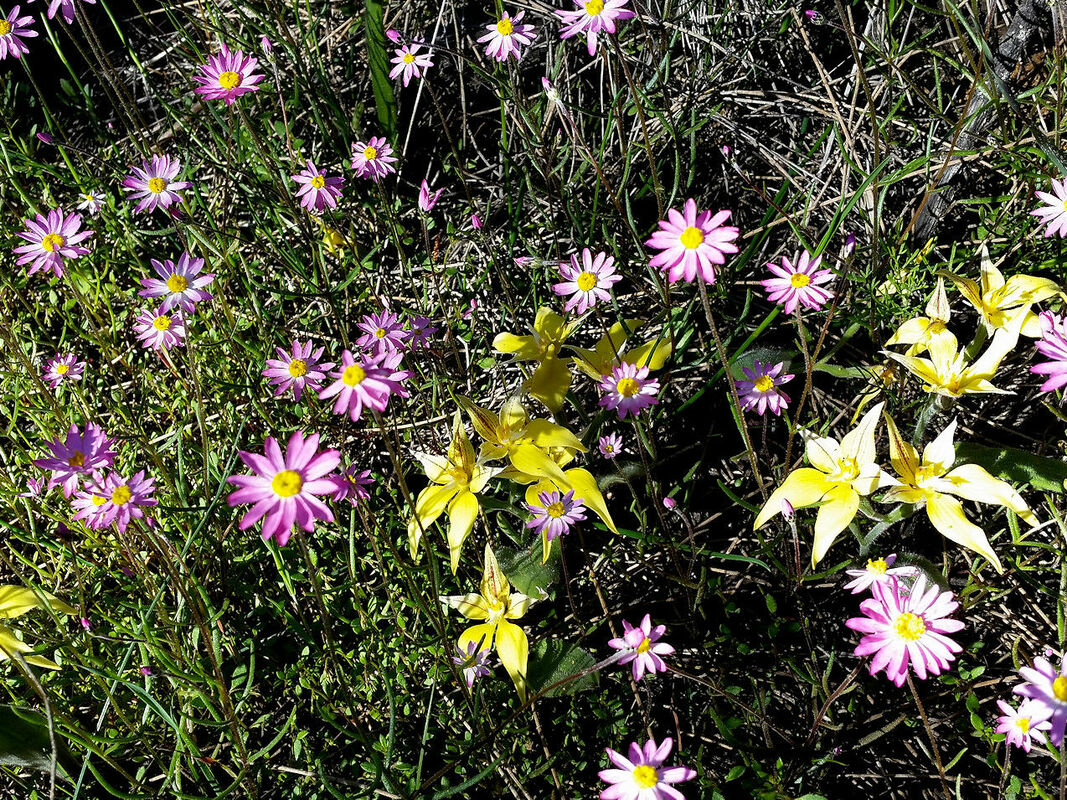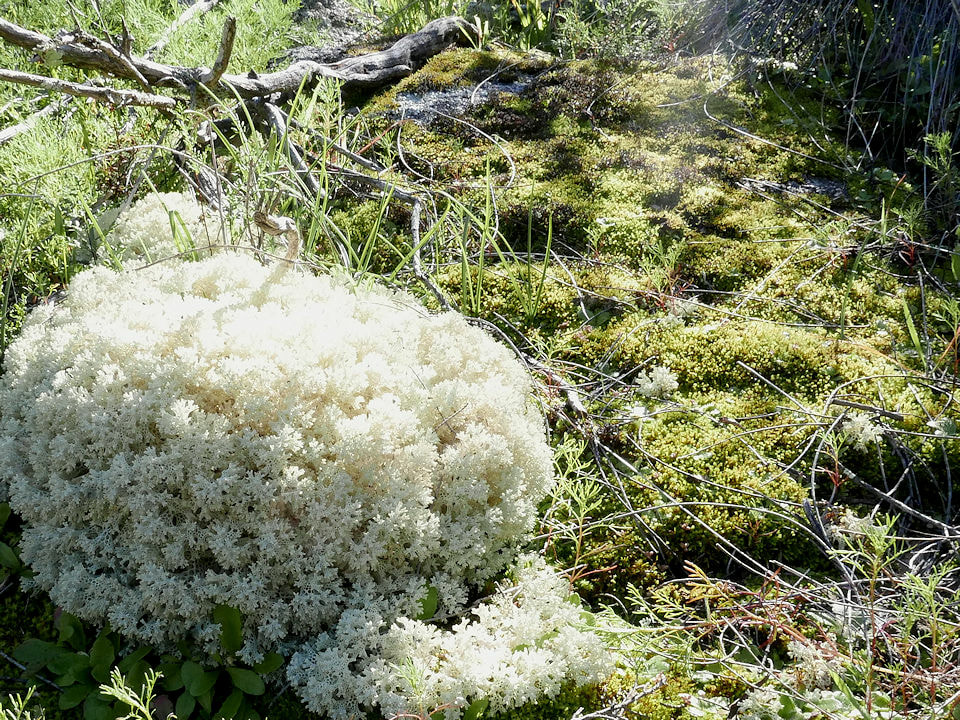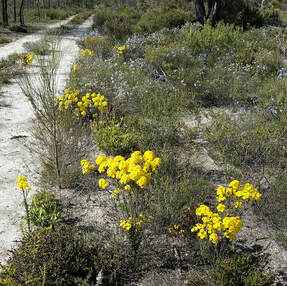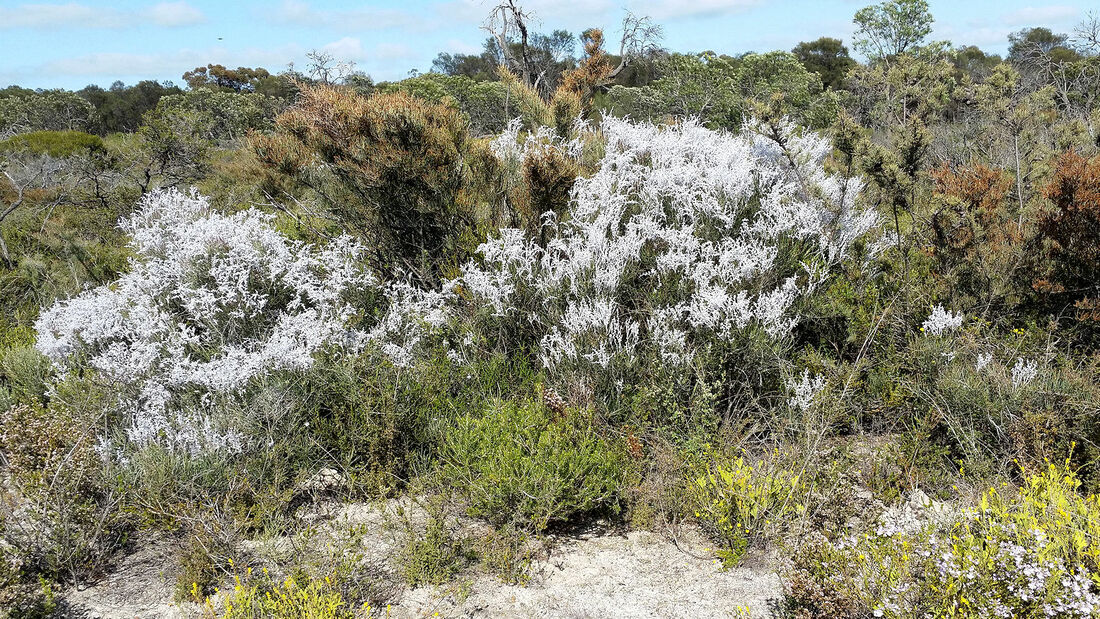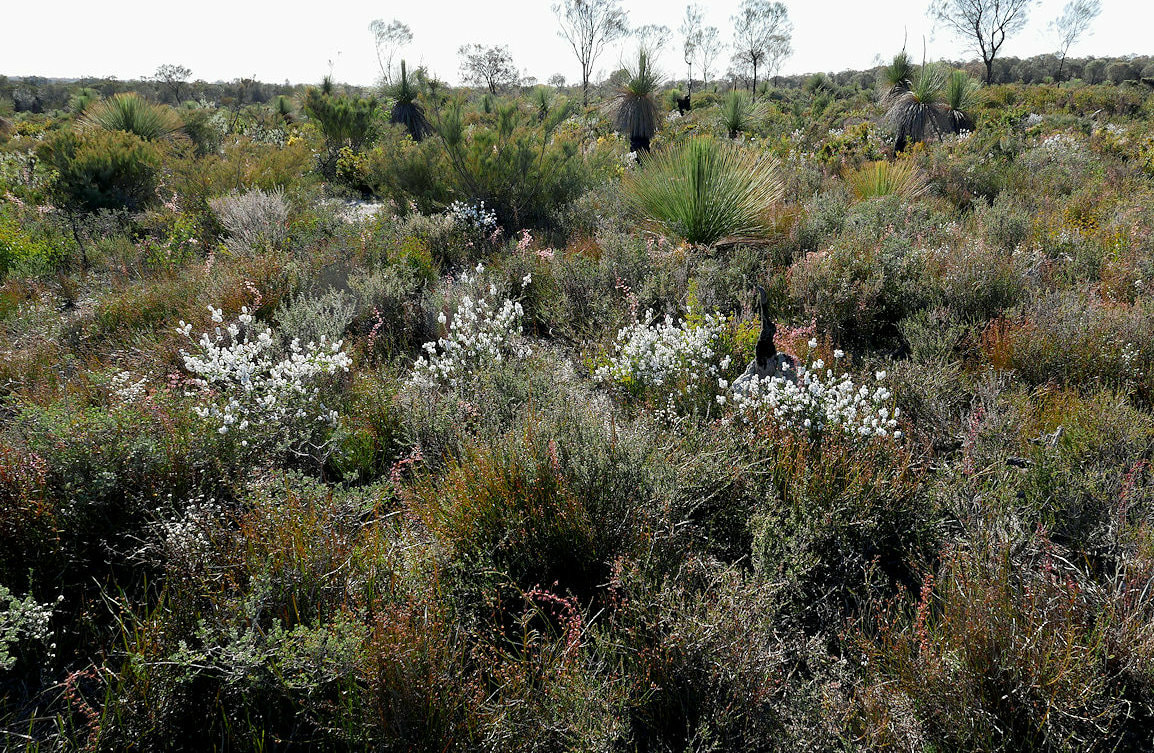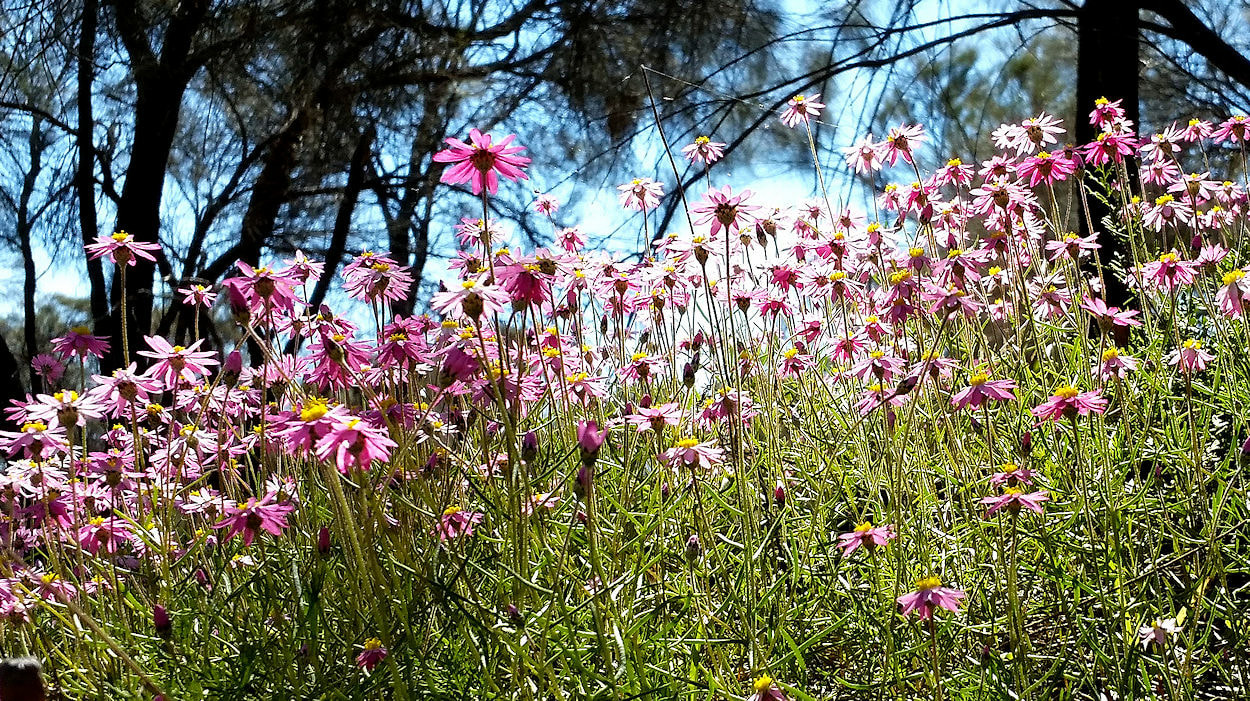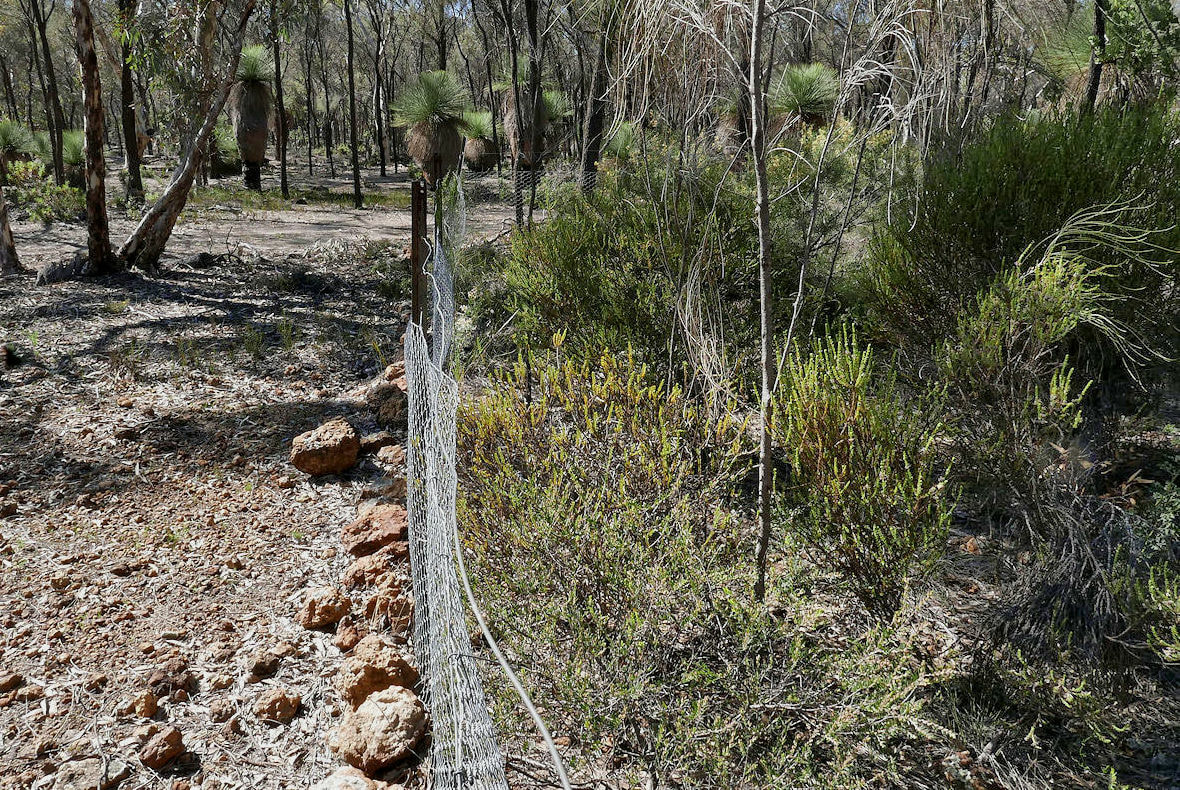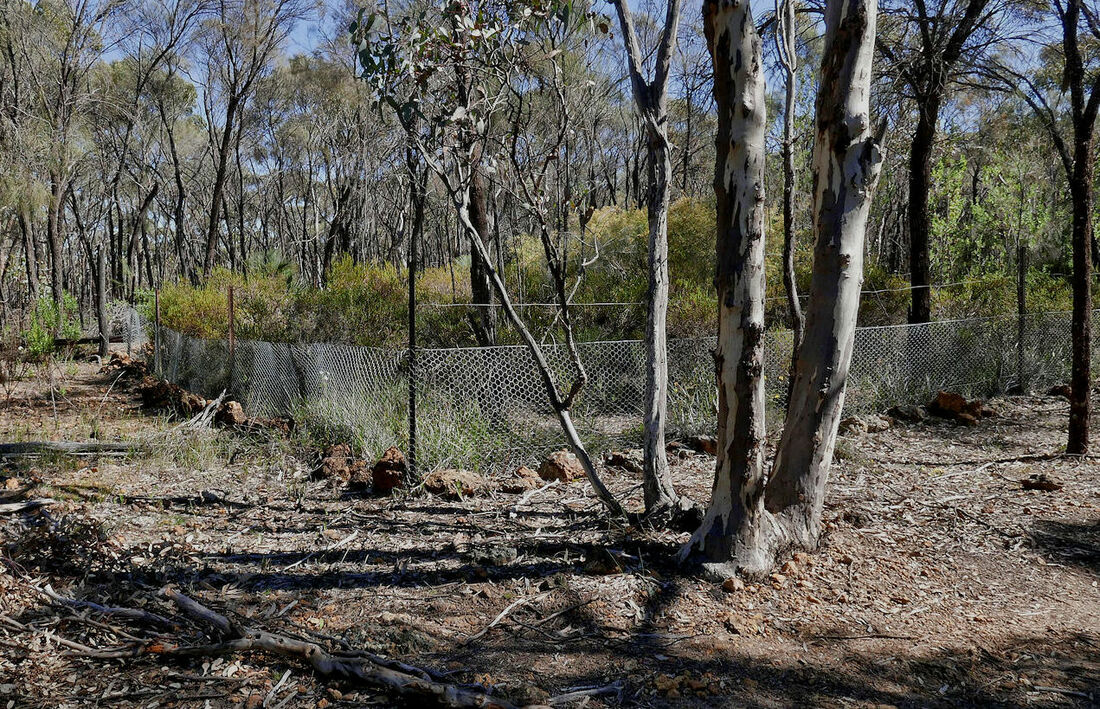When the Friends of Foxes Lair group formed in 1999, Foxes Lair was much neglected. Numerous tracks were used as a rally circuit for trail bikes, 4WD and other vehicles, and it was used for dumping rubbish, and fireside drinking parties.
The group developed a management plan and got to work. A few years later when 30 years of regrowth was cut out to restore the arboretum, I realised that we had no before and after photos to record the tremendous progress that we had made.
I have set up a reference sites throughout Foxes Lair that are photographed regularly.
Progress over the years has been 2 steps forward and one step back.
Despite this, images of the Marri picnic area below indicate significant progress. The yellow arrow shows the same tree in each image.
In 2003 the picnic area was an evening speedway circle with spectators in the centre. Roads radiated out in four directions. The concrete picnic table was then destroyed by someone using a sledge hammer.




